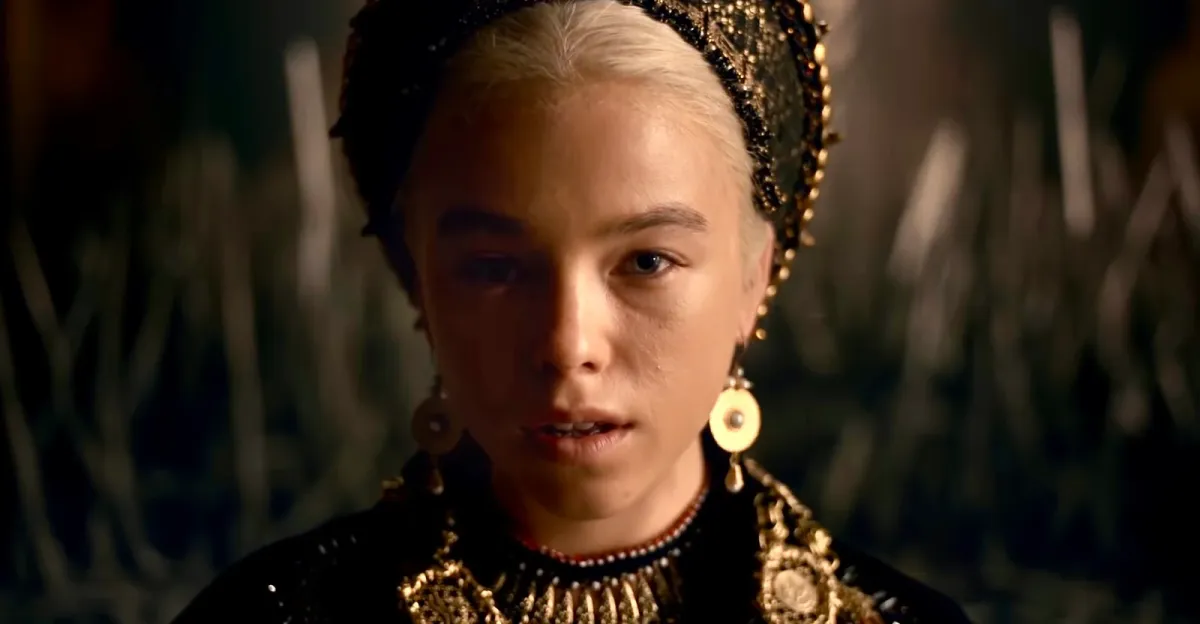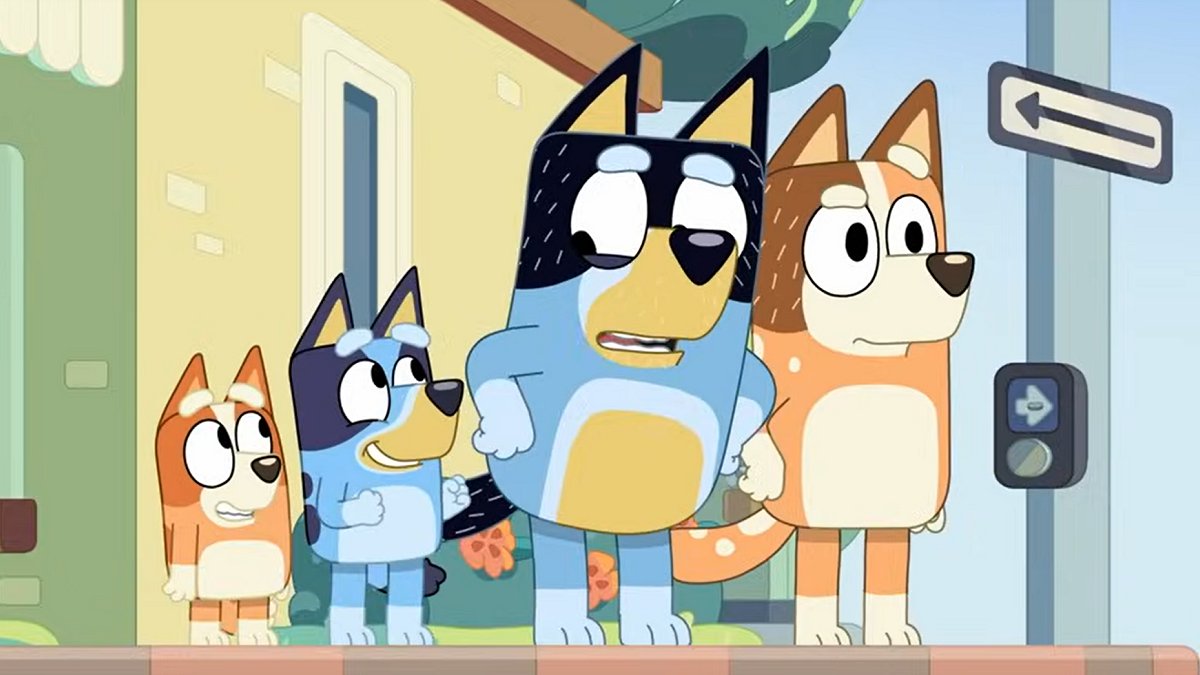***Spoilers for all the episodes of House of the Dragon***
The release of the first two episodes of House of the Dragon has — somewhat predictably — set the Internet on fire with restored fever for George R.R. Martin’s Seven Kingdoms. Clearly, everyone involved is very happy about this, since HBO renewed Game of Thrones’ prequel show for a second season almost immediately after its premiere.
Even though they’re set in the same world, the narrative foundations of the two shows couldn’t be more different—House of the Dragon is set in a much earlier time when the Targaryen rule over Westeros is undisputed, while Game of Thrones presented us with very different Seven Kingdoms, reeling from a rebellion that dramatically changed the face of the ruling class.
And yet, the connections between the two shows are there—so much so that the episodes of House of the Dragon we’ve seen so far are full of reminders to Game of Thrones, with words and objects that we have come to know popping up left and right to remind us that this is indeed the Westeros we spent eight seasons in, just two centuries earlier. Here is every Game of Thrones Easter Egg in House of the Dragon so far.
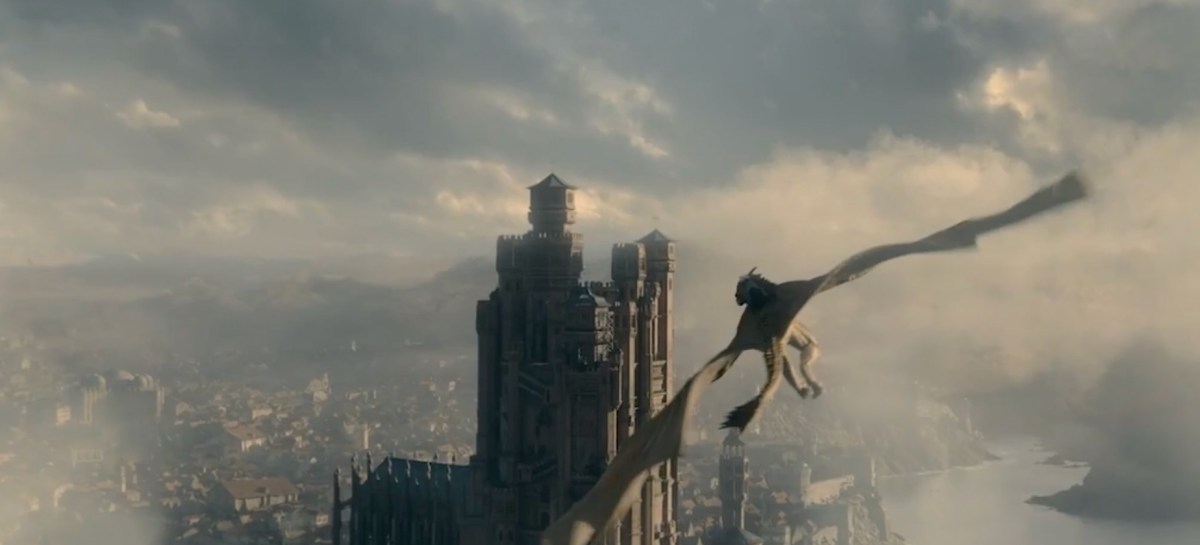
So, here are some of the most prominent easter eggs to be found in the initial episodes “The Heirs of the Dragon” and “The Rogue Prince”— with many more to come in the eight episodes that still have to air.
Valyrian dagger
We know this Valyrian steel dagger very well—belonging to Petyr Baelish, it was first used in an assassination attempt against Bran Stark in Season 1 of Game of Thrones before passing into the hands of his sister Arya, who actually used it to stab and kill the Night King. The first glimpse of this infamous weapon was shown in the teaser for House of the Dragon, with a grown-up Queen Alicent Hightower brandishing it in fury.
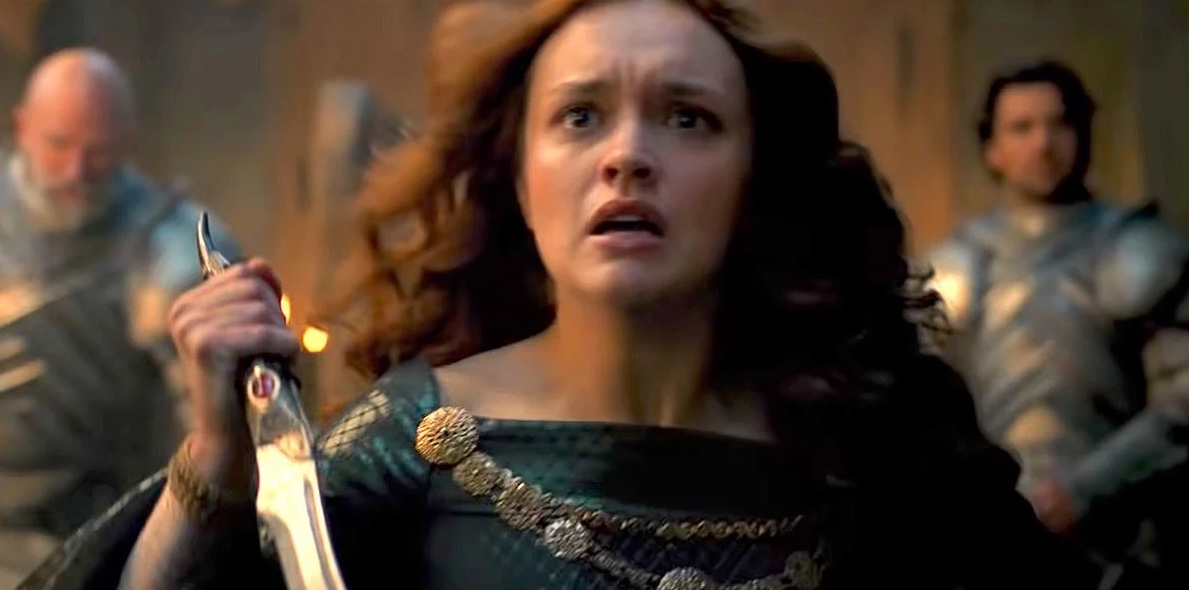
King Viserys is always shown wearing it on his belt, and we learn why in “The Heirs of the Dragon”— the dagger is a symbol of Aegon’s dream of the Long Night, which is why it’s kept by the King, the only person who knows the secret behind the conquest of Westeros. It’s quite fitting, then, that the dagger would eventually be used to dispel the threat that Aegon foresaw—even though it shouldn’t have been Arya. I mean, we all know this. “Provided we weren’t thinking about her” my foot.
Great Council
Even though there’s nothing about the assembly in the very final episode of Game of Thrones that warrants the adjective “great,” it’s worth noticing that the way the show ends is the same way House of the Dragon begins: with the lords and ladies of the Realm deciding who should be the next person to sit the Iron Throne. The Great Council of 101 AC chose Viserys as the successor of King Jaehaerys I, while the council in Season 8 decided to place the crown on top of Bran Stark’s head— and also to stop it from being an inherited privilege. Something that will surely prevent any future wars for the Iron Throne from breaking out, what with the lords of Westeros being so level-headed when it comes to power.
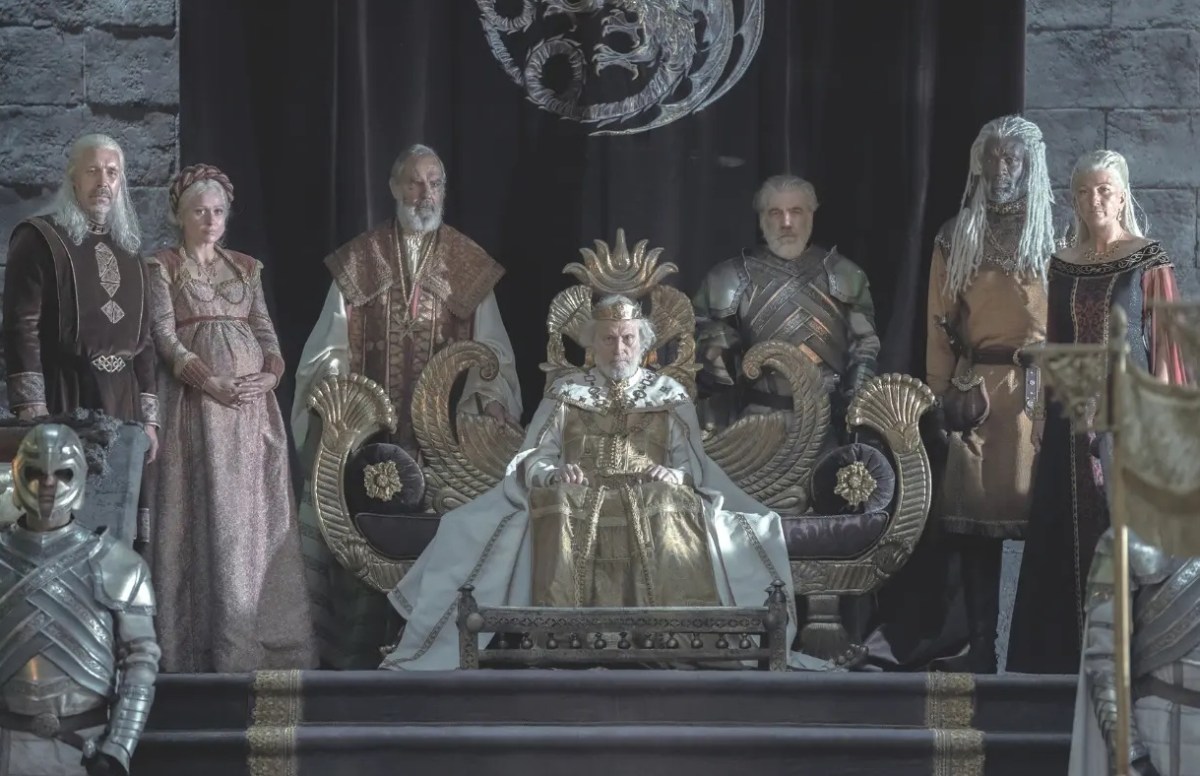
Ten Thousand Ships
In “The Heirs of the Dragon,” Rhaenyra Targaryen and Alicent Hightower sit down in the Red Keep gardens — under a weirdwood tree, it should be noted — to read some history of Westeros. The two end up discussing Nymeria, a queen of the Rhoynar who sailed her people away from their ancestral lands in Essos to escape the conquerors of Old Valyria. Nymeria and her ten thousand ships arrived in Dorne, where Nymeria wed Mors Martell.
The wedding helped secure a new place to live for the Rhoynar — Nymeria then burned the ten thousand ships to highlight the idea that there was no turning back — and also established House Martell as the ruling power in Dorne for all the centuries to come. It’s actually because of Nymeria that the Martells style themselves as “princes,” and that all of them bear the middle name ‘Nymeros’. But Game of Thrones’s viewers might know Nymeria as the name of Arya Stark’s direwolf— which Arya chose precisely because of Queen Nymeria. It’s also a nice wink to another Game of Thrones spin-off currently in the works, which should explore Nymeria’s story — the queen, not the direwolf — in great depth.
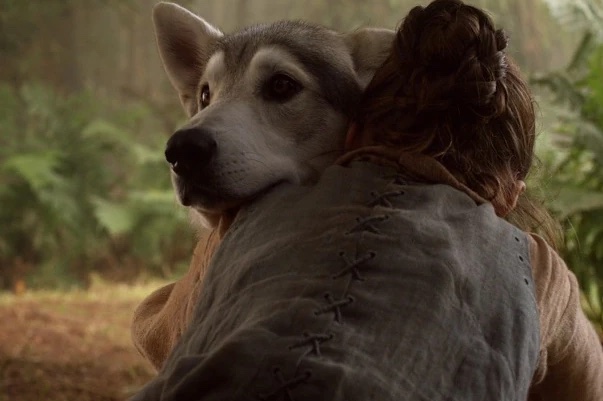
House Arryn
The events of both Game of Thrones and House of the Dragons are precipitated by the sudden death of a member of House Arryn, the Lords of the Eyrie, Defenders of the Vale and Wardens of the East. In Game of Thrones it was Jon Arryn—the then head of the House and the man to whom both Robert Baratheon and Ned Stark had been sent to foster.
After the Rebellion, Robert named him his Hand, and his death — by poison, of course, in a plan orchestrated by none other than Littlefinger — is the inciting incident that sets the whole plot in motion. Robert goes to Winterfell to ask Ned to replace Jon as Hand, Jaime throws Bran out of the window, Ned goes South and learns that Joffrey, Tommen and Myrcella were born of Cersei and Jaime and are therefore illegitimate. You know, the entire plot of Season 1.
In House of the Dragon it’s Aemma Arryn, daughter of the Lord of the Eyrie Rodrik Arryn and his wife Daella Targaryen, one of the many children of King Jaehaerys and his sister-wife Alysanne — meaning that Aemma and her husband King Viserys were first cousins. (Not even that close of a family relationship considering that these are the Targaryens we’re talking about.)
Aemma dies in childbirth — after a brutal choice by Viserys to try and save her unborn child by sacrificing her life — meaning that the King is left with two possible heirs: his brother Daemon and his daughter Rhaenyra. Viserys chooses Rhaenyra, but “The Rogue Prince” shows us that the King plans to remarry— and there are very high chances that his second wife Alicent Hightower will give him his long-desired male heir. Something that might, you know, cause a civil war.
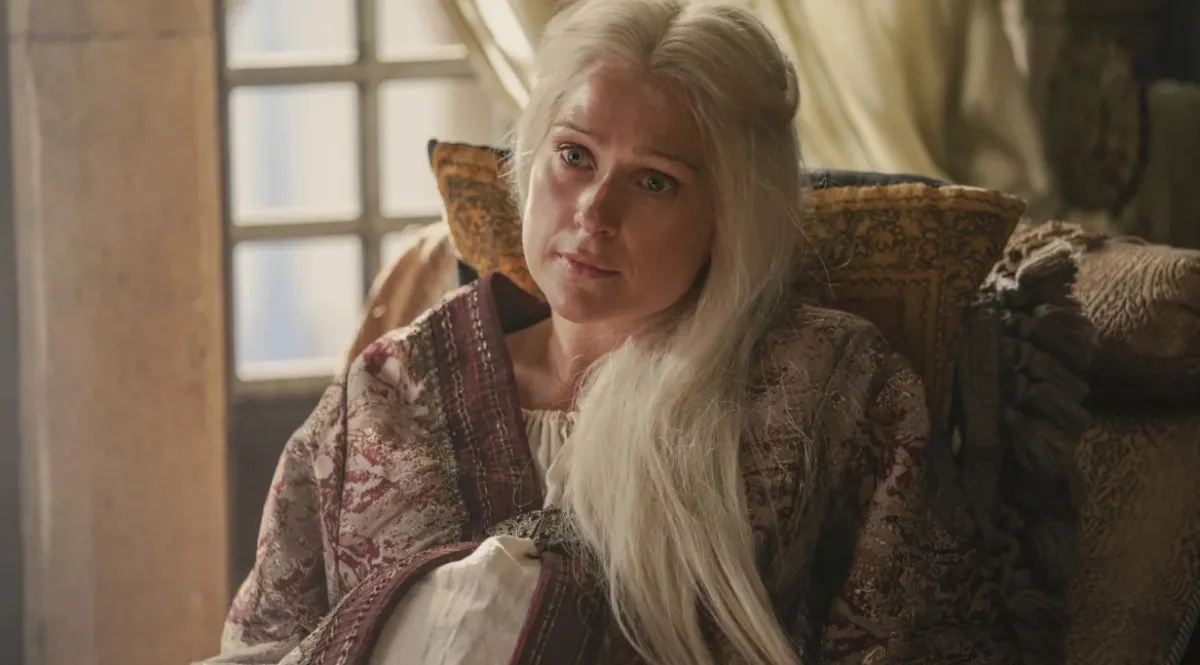
Hot baths
Another easter egg ties Aemma Arryn with her direct descendant (with several generations in between, of course) Daenerys Targaryen — who is also directly mentioned in the opening lines of House of the Dragon. Both are shown taking hot baths— because dragons like heat, after all. Daenerys’s bath in the Game of Thrones bath is shown to be scalding hot, so much so that her servants in Illyrio’s mansion worry that she will get burned. Aemma’s bath, on the other hand, is mild— but she herself tells Viserys that “it’s all the Maesters will allow,” hinting that perhaps she wouldn’t mind the temperature being turned up a bit.
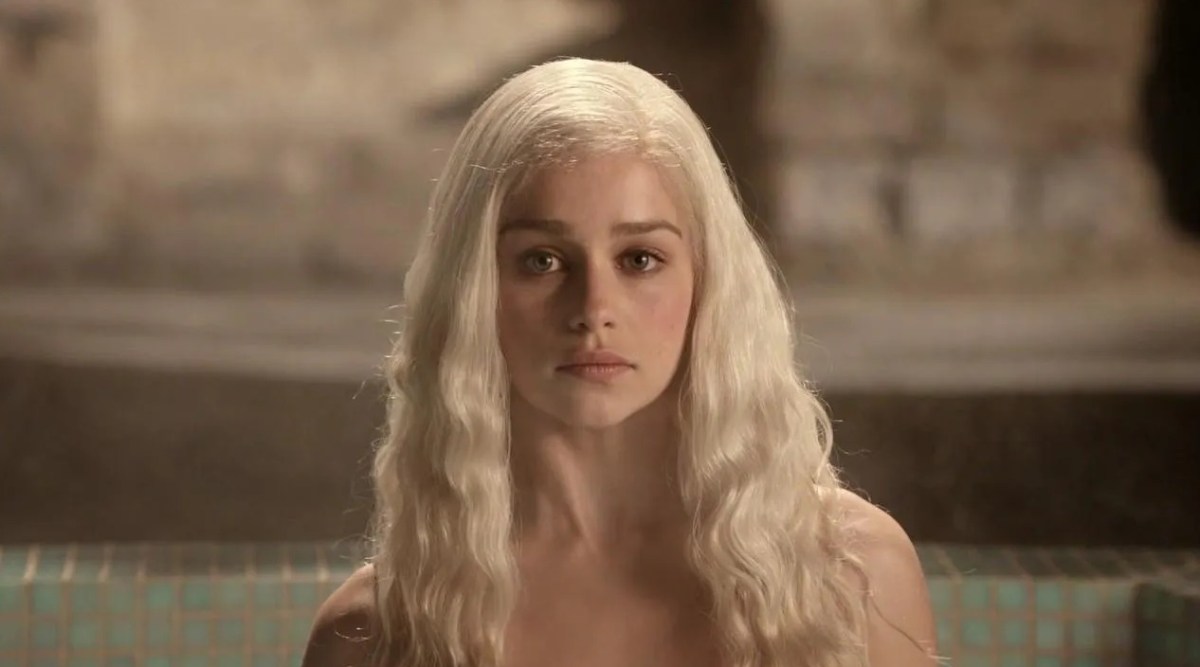
“Dracarys”
The dragonlords of Old Valyria spoke High Valyrian, especially when commanding their dragons. While the pure form of the language died out after the Doom — the Free Cities speak a bastardised version of High Valyrian, while the cities of Slaver’s Bay have their own pidgin of both High Valyrian and Old Ghiscari — the Targaryens maintained their fluency in it, since, as Daenerys herself puts it in Season 3 of Game of Thrones, it is their mother tongue.
That’s precisely why High Valyrian is the language used to command the dragons: Daenerys speaks High Valyrian to Drogon, Rhaegal and Viserion, as do the Dragonkeepers in House of the Dragon. And no command has become more iconic than “Dracarys”— meaning “dragon fire,” which Daenerys used to signal her dragons it was time to open fire.
In House of the Dragon we hear another “Dracarys” in a much different context: a grieving Rhaenyra gives the command to her she-dragon, Syrax, to have her burn the funeral pyre of her mother Queen Aemma and her little brother Prince Baelon.
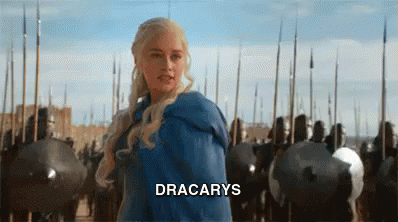
Balerion, the Black Dread
Balerion was known as the largest dragon to have ever lived, as well as the last of the Targaryen dragons to have actually been born in the Valyrian Freehold. He was instrumental in helping his rider, Aegon, in his conquest of Westeros — and it was Balerion’s fire that forged the Iron Throne from the swords of Aegon’s defeated enemies.
Since dragons have very long lifespans (Balerion himself lived for around two centuries) they have several riders throughout the years, while the opposite isn’t usually true — which is why King Viserys was only the last of Balerion’s masters, while Balerion was King Viserys’s only dragon. In “The Heirs of the Dragon” we see Balerion’s skull hanging in the halls under the Red Keep, and it is right in front of it that King Viserys reveals Aegon’s dream to Rhaenyra.
In Game of Thrones there’s another important revelation that happens around dragon skulls. Arya Stark, hidden inside one, overhears Illyrio and Varys discuss the overcoming clash between House Stark and House Lannister and how that will ultimately benefit the one they are really loyal to, House Targaryen.
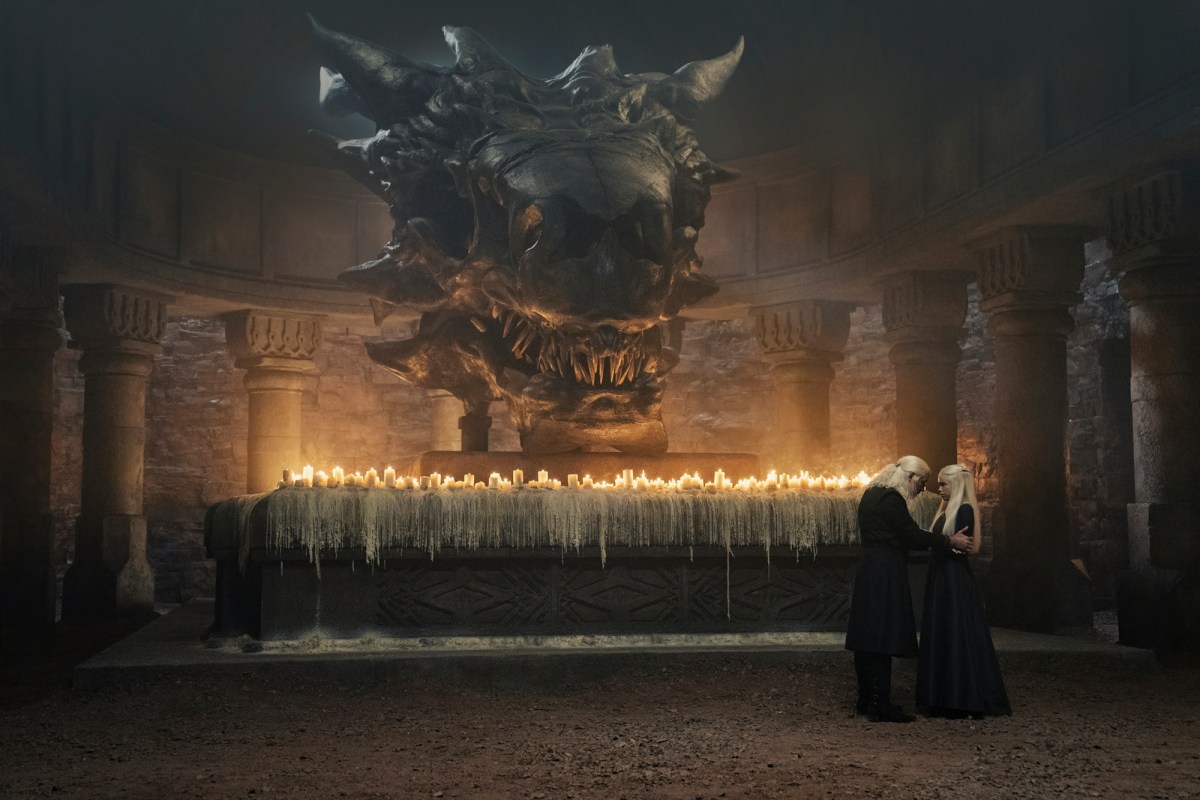
“Promise me”
When Viserys describes Aegon’s dragon dream to Rhaenyra, he urges her to keep it secret and do her best to pass it on to her successors. “Promise me, Rhaenyra,” he asks. A wording that immediately brings to mind another similar plea — Lyanna Stark asked the same of her brother Ned when he found her dying at the Tower of Joy, after having given birth to Jon Snow.
Ned, of course, promised his sister to keep the baby and his lineage safe, which is why he returned home declaring Jon his bastard son rather than his true-born nephew.
Two promises that circle around the same issue: Aegon’s dragon dream and Jon’s status as a son of ice and fire, meaning someone with a huge role to play during the Long Night.
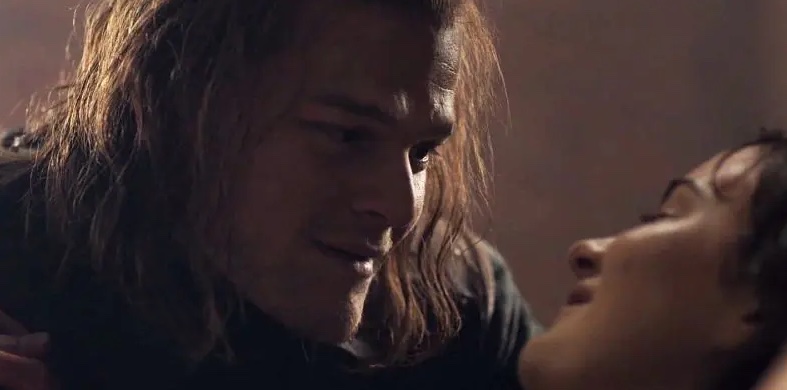
A Song of Ice and Fire
Last easter egg that revolves around Aegon’s vision of the future of Westeros: the name that Aegon gave his dream, the “song of ice and fire.” That is, of course, the name of the entire book series— as well as the name of the book that Sam Tarly finishes writing at the end of the eighth season of Game of Thrones.
Main Theme
Can the fact that the main theme for the opening credits is the same count as an easter egg? Let’s add it anyways since Ramin Djawadi’s work is too incredible not to mention at least once. While the opening credits themselves are obviously different — in House of the Dragon they are meant to represent the blood connecting the Targaryen lineage — the music that accompanies them is the same, and there are several other pieces from Game of Thrones’s soundtrack that have already made their appearance in House of the Dragon.
Dragon Eggs
The last easter egg is about eggs, which seems pretty fitting, even though it could technically be considered more of a theory than an actual call-back to Game of Thrones.
The final part of House of the Dragon’s second episode, “The Rogue Prince,” revolves around Daemon Targaryen stealing one of the dragon eggs from the Dragonpit—an egg he plans to place in the cradle of his son, as per the Targaryen custom. The egg he steals was laid by the she-dragon Dreamfyre, who will have a major role to play during the Dance of the Dragons, even though this theory centers around her past.
The last rider of Dreamfyre was Princess Rhaena Targaryen, the granddaughter of Aegon the Conqueror. During the struggles for the Iron Throne that followed the Conqueror’s death, Rhaena spent a period of time hiding away on Fair Isle in the Sunset Sea. There, Dreamfyre laid two batches of eggs, and it was only some ten years later that Princess Rhaena discovered that three of those eggs had been stolen by Elissa Farman, the daughter of the lord of Fair Isle and Rhaena’s close friend and possible lover.
Elissa brought the three eggs to the Free Cities—particularly to Pentos. And who else lived in Pentos? Illyrio, one of the Magisters of the city, the one who welcomed Viserys and Daenerys Targaryen into his mansion and gifted dragon eggs to Daenerys at her wedding to Khal Drogo. It’s very possible that those three eggs stolen by Elissa Farman ended up being Drogon, Balerion and Rhaegal—finally hatched by a Targaryen descendant after almost three hundred years.
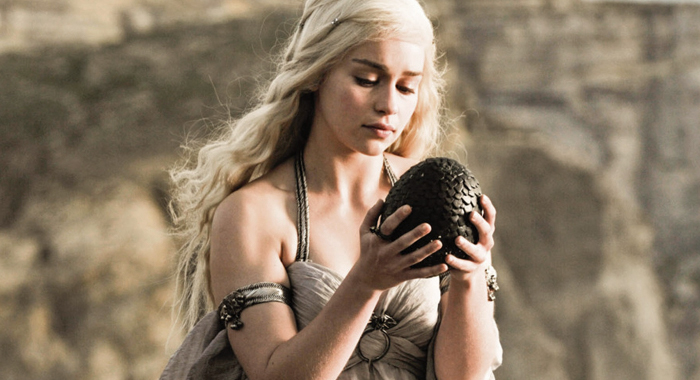
The third and fourth episodes of House of the Dragon, “Second of His Name” and “King of the Narrow Sea,” featured some more easter eggs that should have made alarm bells go off in everyone who stuck through Game of Thrones’s eight seasons. Here is a list of the best in both episodes.
The hunting party
Most of the action of Episode 3, “Second of His Name,” takes place in the Kingswood— the woods just outside of King’s Landing where royal hunts take place and the odd band of bandits hides out from the gold cloaks of the City Watch. And the occasion is indeed a hunt, one that is meant to celebrate the second birthday of Viserys I and Alicent’s son Aegon.
The fact that much of the episode revolves around the King hunting in the Kingswood of course immediately brings back the memory of Robert Baratheon, who we saw doing the very same thing in the first season of Game of Thrones— the throwback is even more powerful when you remember that in the books it is indeed another white hart that the Baratheon King is hunting for. It also helps establish another useful comparison between these two moments in the history of Westeros, much like the tourney for what was meant to be the birth of Aemma Arryn’s second son.
The splendour of the Targaryen royal hunt, with lords and ladies milling around as well as dogs and horses and handlers of all kinds, is certainly a striking contrast to the scenes of Robert hunting— with a party consisting of him, his brother Renly, Ser Barristan Selmy and Lancel Lannister. It drives home once again the overall decline the Seven Kingdoms have experienced, a decline that will start right here and now with the Dance of the Dragons.
And then, of course, there’s the boar. Both Rhaenyra and Robert are attacked by a boar as they find themselves in the middle of the Kingswood— but the results of those encounters are vastly different. Rhaenyra goes to town on “her” boar, drenching herself in blood as she stabs it repeatedly— a clear symbol that she’s meant to become a strong ruler unlike her father, who struggles to finish off a tied down and subdued deer in the same episode. Robert ends up being fatally wounded by “his” boar — with a little help from Lancel Lannister’s Cersei-given wine — and dies, igniting that whole mess that will be known as Joffrey’s reign and the War of the Five Kings.
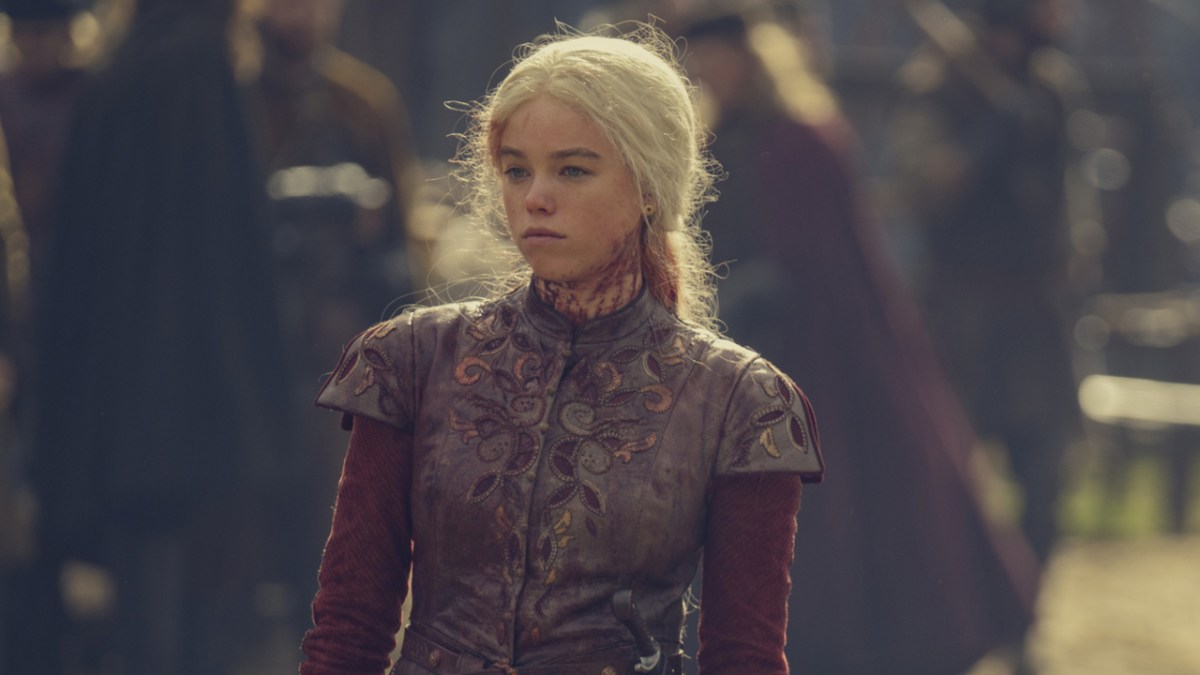
Samwell the Bard
At the beginning of Episode 3, Rhaenyra is shown trying to escape having to be in the company of her father’s court — and especially her father’s wife — by hiding out in the Red Keep’s godswood, where she has her personal bard do the Westerosi equivalent of putting a song on repeat on Spotify.
The bard is named Samwell— a name that was surely picked to bring back the memory of Jon’s best friend in the Night’s Watch, as well as the new Grand Maester of the Red Keep, Samwell Tarly.
The song that Samwell sings is also pretty interesting. We can hear its end, “Under the dragon’s eye, under the dragon’s eye,” and then its first verse, “She fled with her ships and her people, her heart broken,” before Queen Alicent dismisses Samwell. Those two lines, though, are enough to recognise that the song is about Princess Nymeria of the Rhoynar, who fled from her people’s native lands to bring them to safety as the Valyrian Freehold was establishing its empire in Essos.
It’s not the first time we’ve heard Nymeria mentioned in House of the Dragon — Alicent and Rhaenyra read a book about her life in Episode 1 — or in Game of Thrones — Arya famously names her direwolf after the Rhoynar Princess — and the fact that HBO is working on another spin-off based precisely on Nymeria’s story certainly has something to do with it.
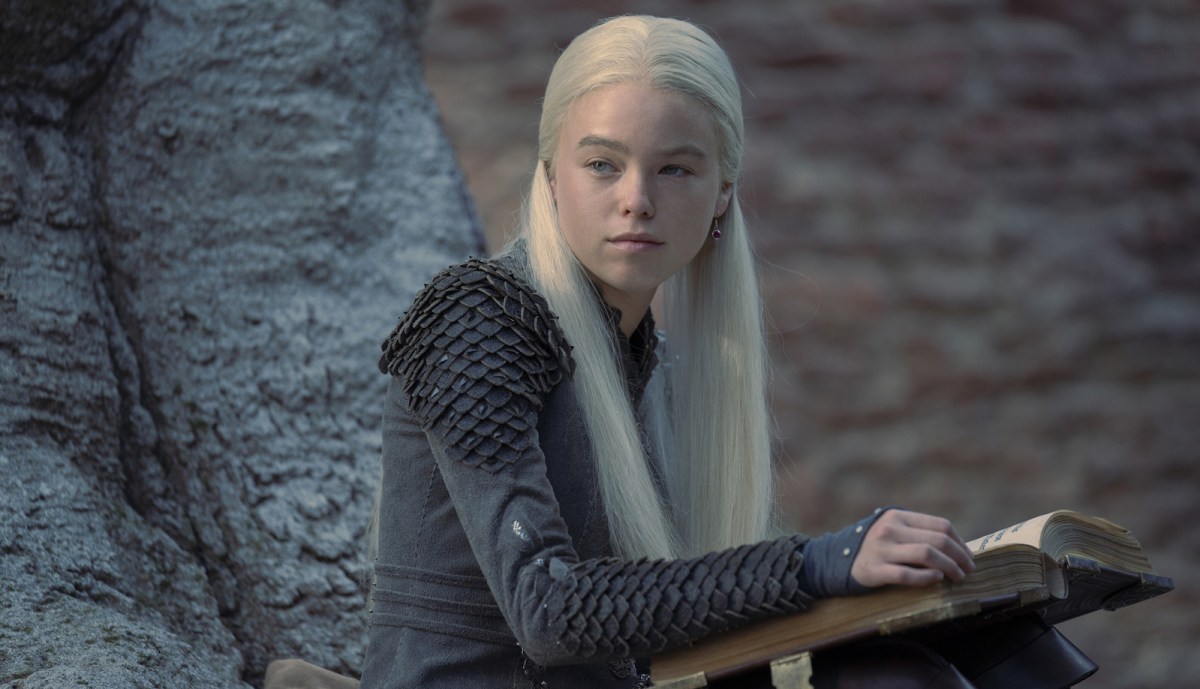
Lady Redwyne
As the king and his lords go out hunting, the ladies of the realm remain in a lavish tent set up for them to chat and gossip. Rhaenyra briefly joins the circle of noblewomen that surround Queen Alicent, just in time to deliver a pretty sick burn — she is a Targaryen, after all — to one Lady Redwyne who was criticising Daemon Targaryen’s campaign in the Stepstones.
Redwyne is a name that should ring a bell— one of the most prominent Houses in the Reach, it’s also the one in which our favourite snark queen, Lady Olenna, was born. The famous Queen of Thorns was the daughter of Runceford Redwyne, who arranged her marriage to Lord Luthor Tyrell ensuring his daughter would become the Lady of Highgarden.
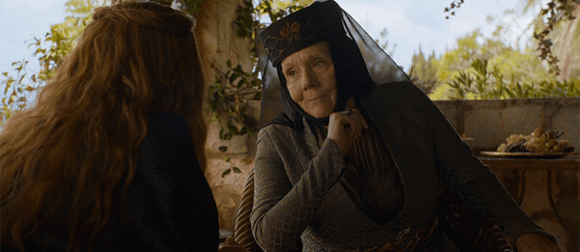
The Brackens and Blackwoods
The fourth episode of House of the Dragon, “King of the Narrow Sea,” opens up with a very bored Rhaenyra going through a long queue of nobles looking to wed her. First of all, it’s worth noticing that this is the first time we have ever seen Storm’s End, the ancestral seat of House Baratheon— a solid fortress boult right overlooking the sea of Shipwrecker’s Bay.
But even more interesting are the two protagonists of the duel that breaks out as Rhaenyra, Lord Baratheon and Ser Criston Cole listen to the would-be grooms. When the young Lord of House Blackwood gets mocked by the older Lord of House Bracken, swords are drawn— and Lord Bracken ends up dead for his mocking.
It might seem like usual Westerosi squabbling where someone inevitably takes things too far, but there’s actually a deeper level to that. The Blackwoods of Raventree Hill and the Brackens of Stone Hedge are two neighbouring houses in the Riverlands, engaged in a fierce feud that goes back to the Age of Heroes— when both claim they were Kings before the other House overthrew them. Their rivalry will give Robb Stark several massive headaches as he marches South during the War of the Five Kings, with both Houses serving under him— since they’re bannermen of his grandfather, Lord Hoster Tully, Catelyn’s father.
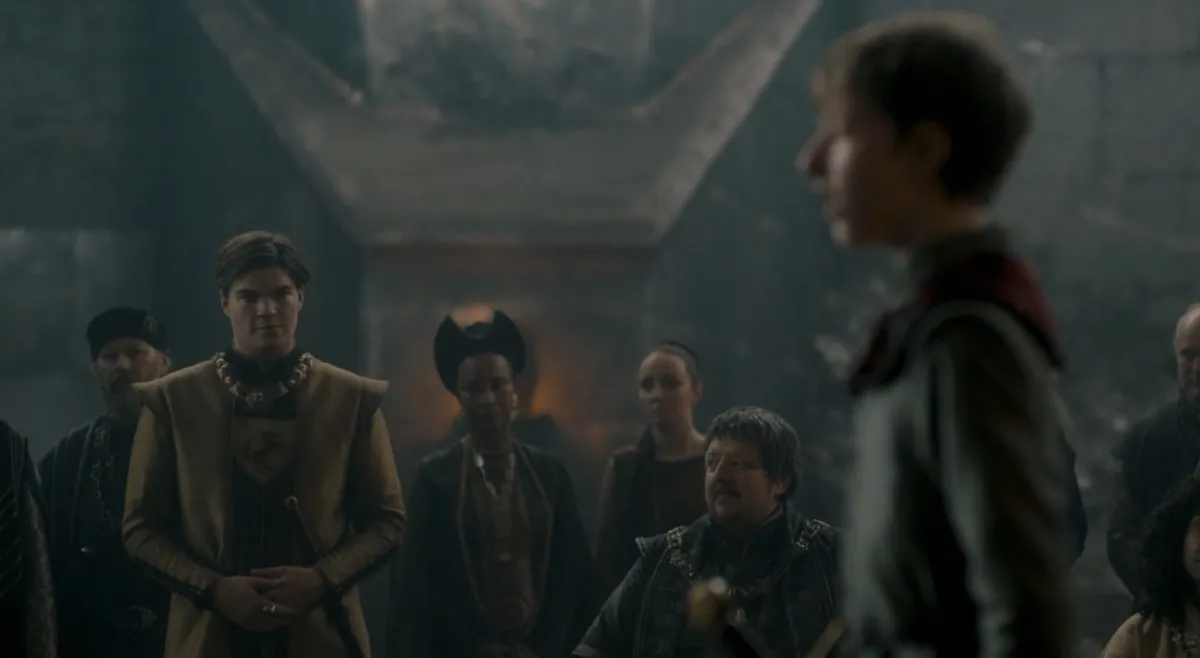
Secret Passageways
The escapade that Rhaenyra and Daemon have in “King of the Narrow Sea” is pretty much the heart of the whole episode— and the way it starts also reminds us of one particular architectural feature of the Red Keep. When Rhaenyra discovers the peasant clothes her uncle left for her, she also finds instructions on how to locate the secret passageway that opens up in her rooms— from there, she slips out of the Keep and onto the King’s Landing streets.
The Red Keep is actually crisscrossed by these secret passageways, connecting all areas of the castle— it’s how Varys’s little birds were able to spy on all residents of the Red Keep, for once, or how Jaime was able to help Tyrion escape jail and how Tyrion himself managed to get access to Tywin’s rooms and kill both him and Shae.
Their construction was ordered by Maegor the Cruel, the third Targaryen king to sit on the Iron Throne— the second of Aegon the Conqueror’s two sons. Once the Red Keep was finally completed, Maegor invited all those who had worked on the castle to a great feast— at the end of which he had them all killed, to make sure the secrets of the Red Keep would remain his and his alone. There is a reason he’s known as “The Cruel,” after all.
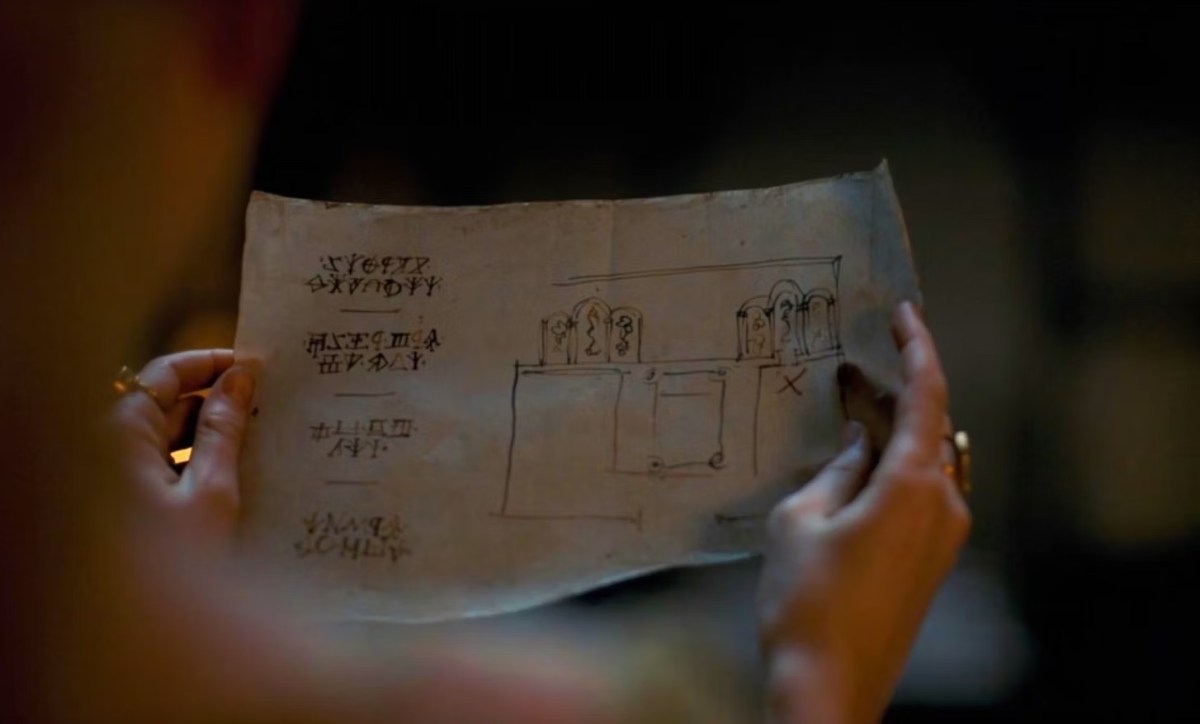
The Prince That Was Promised
The Valyrian dagger steals the spotlight once more in Episode 4, reminding us of how central it has become in Game of Thrones/House of the Dragons lore and cluing us in on how the story might go in the books. When Rhaenyra enters her father’s chambers, bracing herself for the scolding of a lifetime after her nightly escapade with Daemon, she sees the dagger— left to the flames of a brazier.
We already know from Episode 1 that this dagger symbolises the dream that Aegon the Conqueror had, the Long Night and the need for a Targaryen ruler on the Iron Throne to unite Westeros against the Others. We also know that Aegon called this dream of his “The Song of Ice and Fire”. Now we learn that the dagger has — in true One Ring fashion — a sentence in High Valyrian etched on its blade which can be revealed only by fire. That sentence reads as “From my blood comes the Prince That Was Promised”.
In ASOIAF lore, The Prince That Was Promised is a mythical hero. It’s prophesied that The Prince, whose coming will be heralded by “a bleeding star,” will help deliver the world from darkness— and that his will be the Song of Ice and Fire”. Often the figure of The Prince overlaps with that of Azor Ahai— both are said to be “born amidst salt and smoke,” for example, by several characters throughout the books. Melisandre especially, when she first leads everyone to believe that Stannis Baratheon might be The Prince That Was Promised.
Rhaegar Targaryen, Daenerys’s older brother, was also particularly wound up in the Prince That Was Promised prophecy. At first, he believed that he himself could be The Prince, then his infant son Aegon. And that’s because most people in the history of Westeros have believed that since the name of the hero in Westerosi Common Tongue is “Prince,” then it must definitely be a man.
But then again, the original prophecy is in High Valyrian— and as Missandei explains to Jon Snow and Ser Davos Seaworth in the seventh season of Game of Thrones, High Valyrian nouns have no grammatical gender. So it could very well be “The Princess” that was promised— and all signs point to Daenerys being the one, since she ticks all the boxes.
Born amidst salt and smoke? Check, it could either be Dragonstone were she was born or the pyre on the Dothraki Sea were she was reborn with her dragons. Dragons which she “awoke from stone,” something that also is used when referring to The Prince That Was Promised. The “bleeding red star,” would be none other than the red comet we see in the Westeros sky at the beginning of Season 2— Osha even says so to Bran. The red star means one thing and one thing only— dragons.
Then again, the Prince is said to possess the “Song of Ice and Fire,” whatever that song might be— we don’t know if it’s meant to be a metaphor or an actual song. And who was born from the union of ice and fire? Jon Snow, the son of Rhaegar Targaryen and Lyanna Stark. I guess the only way to have all the answers is for George R.R. Martin to finally drop The Winds of Winter.
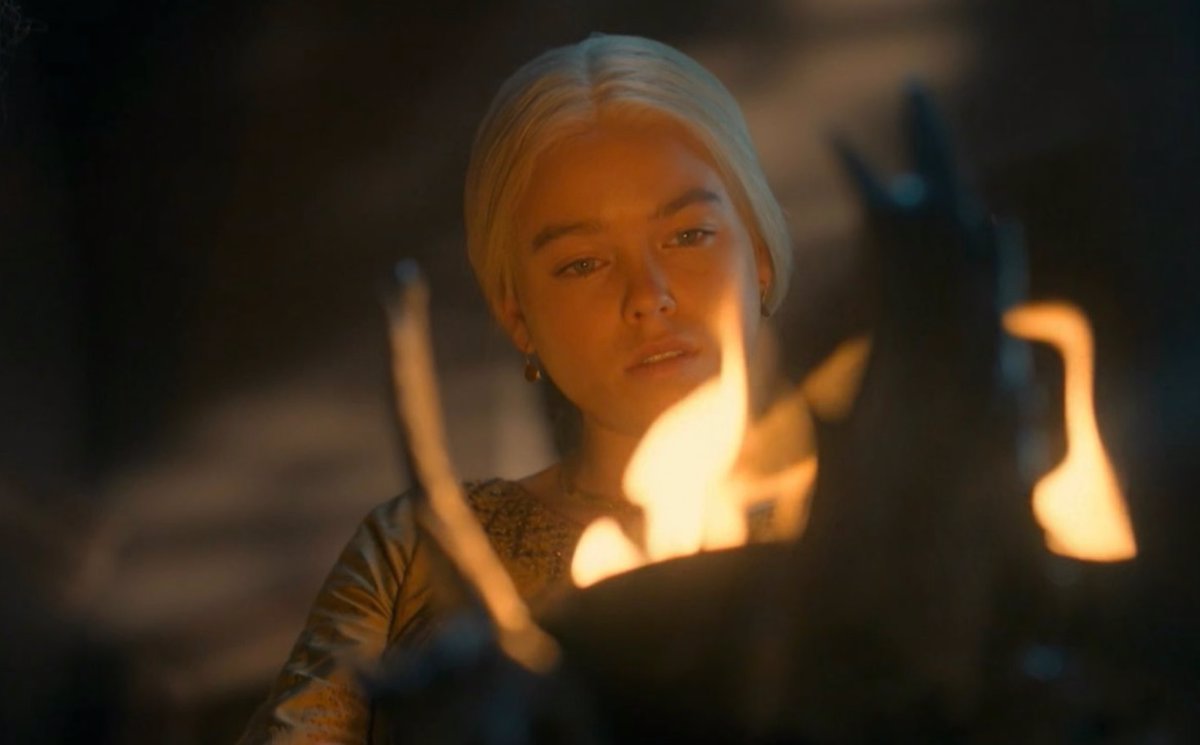
A new House of the Dragon episode means new easter eggs connecting this chaos-filled show filled to Game of Thrones— the OG chaos-filled show. Here are some of the ties between the two that you might not have realised.
Targaryen Ships
It’s not the first time we’ve seen the Targaryens travel by ship in House of the Dragon— Rhaenyra was going back to King’s Landing from Storm’s End after her disastrous meeting with all her would-be-husbands in Episode 4, for example.
But as father and daughter sail towards Driftmark to secure a match between Rhaenyra and Laenor Velaryon that will hopefully heal the wound between the Iron Throne and the Lord of the Tides, there’s a detail that it’s nonetheless worth pointing out— the royal ships are virtually the same as the ones that are going to bring Daenerys back to Westeros in a little less than 200 years.
After all, by the time Daenerys sails to Dragonstone to start her conquest, the Targaryens have been out of power for a little less than twenty years— depending on whether you go by Dany’s book age, thirteen years old, or show age, around seventeen. It makes sense that there are still plenty of people who can put together a Targaryen banner with the proper design— as opposed to the lack of dragon saddle makers since by the time Daenerys’s children are born the world has not seen a dragon for the past century.
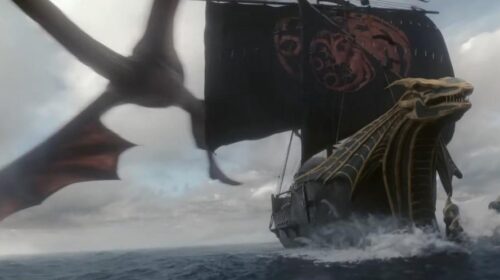
Messy Weddings
At the wedding of Daenerys and Drogo, Magister Illyrio informs her that “a Dothraki wedding without at least three deaths is a dull affair”. And over the course of Game of Thrones we’ve seen that things aren’t much different when it comes to Westerosi unions— let me just say Red and Purple Weddings.
So the incredibly messy ceremony for the engagement of Rhaenyra and Laenor, where Ser Criston Cole absolutely loses it and pulls his own version of the old Gregor-Clegane-vs-Oberyn-Martell on poor Ser Joffrey Lonmouth, fits right in. It’s an event that was bound to happen since it also appears in the book that serves as a source for House of the Dragon, Fire & Blood— in the books, though, Ser Criston fatally wounds Ser Joffrey with his morningstar during a tourney round. The poor knight spends six days in agony before actually dying.
Is it better in the show? Is it worse? The result is the same. Sure, they could have at least mopped the floors of the hall before actually celebrating the wedding instead of having Ser Laenor be married less than two meters away from a pool of his lover’s blood, but that’s Westeros for you!
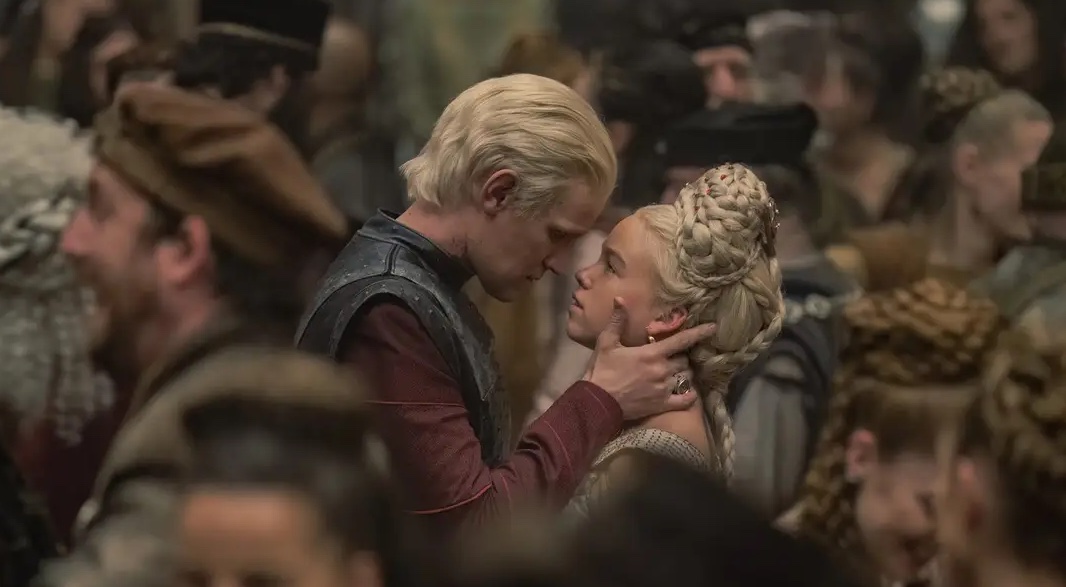
An Understanding
The frank conversation that Rhaenyra and Laenor have as their fathers discussed their engagement — where ducks and geese serve as a convoluted metaphor for the two’s sexual preferences — can’t help but bring to mind the conversation that Renly Baratheon has with his new wife, Margaery Tyrell, as the War of the Five Kings reaches its peak.
Both couples reach an understanding of letting each party do as they please, but only after their duty is done— duty, in this case, is bringing forth the always-sought-after heir.
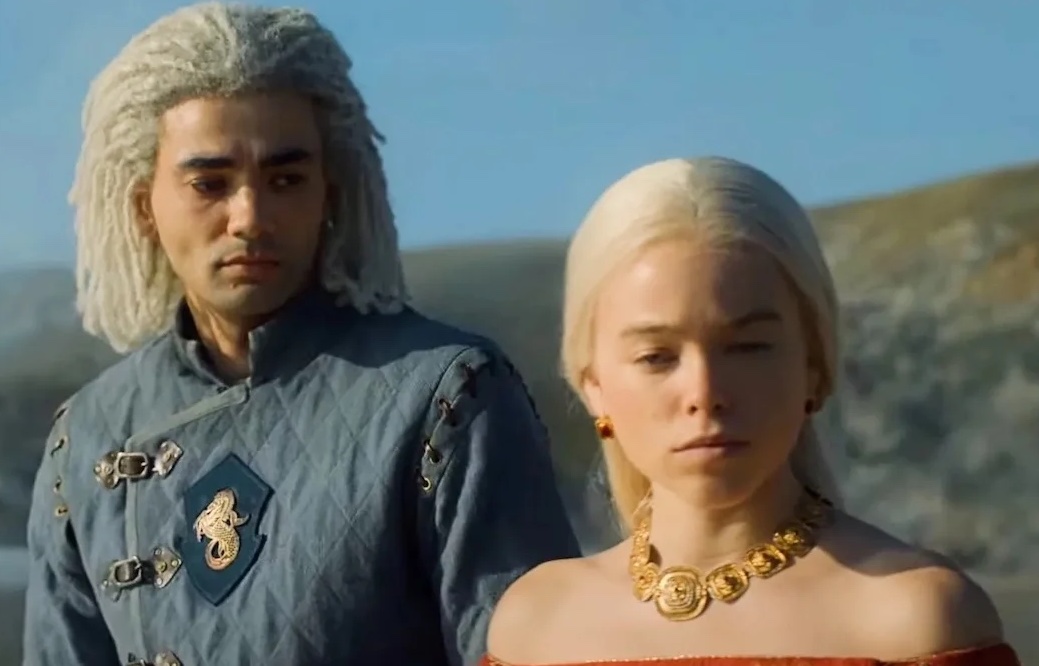
Mushroom
This isn’t really an easter egg that connects House of the Dragon to Game of Thrones— but rather one that united the show with its source material. You see, Fire & Blood reads as a history book about the Targaryen reign written by Gyldalyn, an archmaester of the Citadel who lived during the reign of King Robert Baratheon— which is why he skims over several details, accounting for the differences between the book and the show.
To compile his history, Gyldalyn has three different sources— Septon Eustace, Grand Maester Munkun and Mushroom, who all lived during the Dance of the Dragons and pose themselves as direct eyewitnesses to the events.
Now, Mushroom was a court jester affected by dwarfism who served in both the courts of Viserys I and Rhaenyra— and we might have caught a glimpse of him during the wedding feast, appearing among the musicians playing on one side of the hall. It’s not been confirmed whether it was really him or not, but it would have been a nice touch.
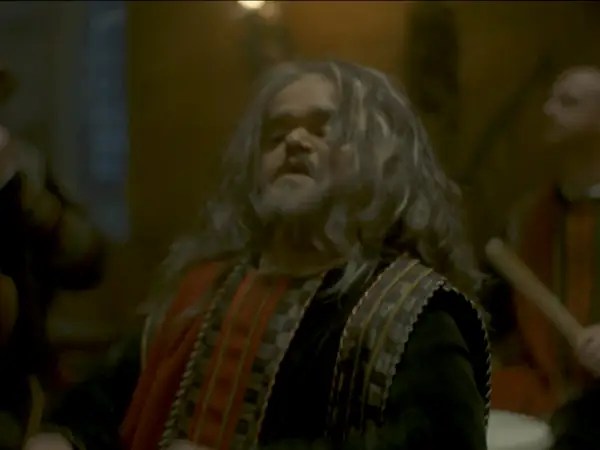
Episode 6 of House of the Dragon brought us ten years into the future, showing us all grown-up Rhaenyra and Alicent and their children— who populate the Red Keep and brawl in its courtyard, already pawns in the conflict between their mothers. In what has by now become tradition, here are some parallels that “The Princess and the Queen” drew with the show that preceded it, Game of Thrones.
Red Keep Windows
The windows of Maegor’s Holdfast, the innermost part of the Red Keep, have definitely seen a lot. If only those bricks could talk. And one of the Game of Thrones easter eggs in this new episode of House of the Dragon revolves around one of them— the shot of a naked Aegon Targaryen (Ty Tennant) masturbating as he’s dangerously standing on the windowsill can’t help but bring to mind the tragic end of Tommen Baratheon, some couple of centuries later.
While I’m still not sure whether or not it’s the exact same window — Aegon’s rooms are those of a prince, while Tommen should have technically already been living in the King’s apartments by the time his mother decides to blow up the Great Sept — I believe the shot composition was at least a little bit intentional. Just a tiny tiny bit.
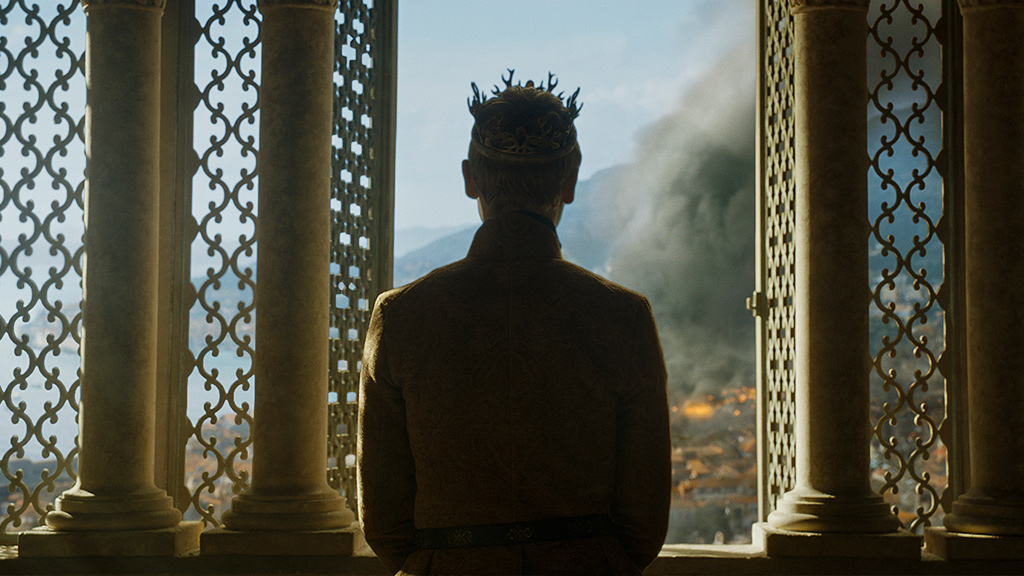
The seed is “Strong”
You all remember what Jon Arryn was muttering before he died even before the proper start of Game of Thrones, right? How the mystery of Robert’s children’s actual parentage basically kept Ned awake at night throughout the entire first season of the show— and ended up being one of the reasons why he got his head chopped off at the end of it?
Well, I’d say that no sentence describes the situation with Rhaenyra’s children better than “the seed is strong”. Or better yet, “the seed is Strong”. What with Jacaerys, Lucerys and Joffrey not having a single strand of silver-blonde Targaryen hair between the three of them and instead looking very much like Ser Harwin Strong. It’s definitely not a properly planned easter egg, but it does fit particularly well.
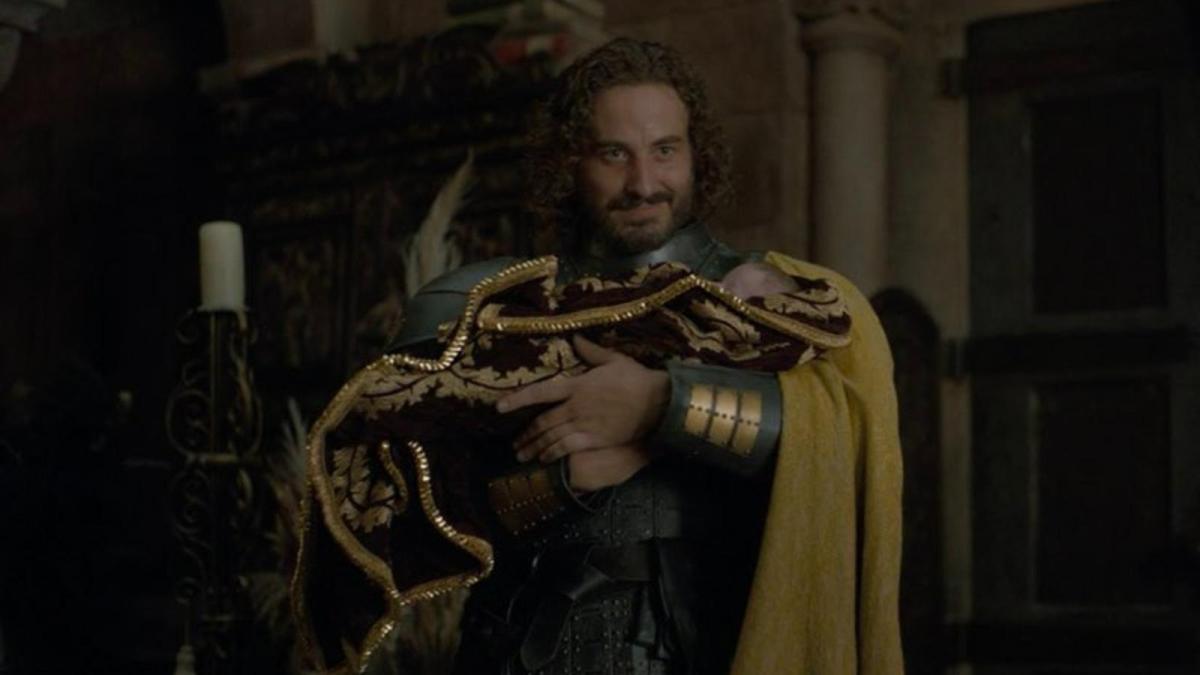
“I promise”
After Ser Harwin snaps and beats the living daylights out of Ser Criston in the Red Keep yard — and some might say “good for him” — his father decides that it’s time to take him away from court and the rumours that he’s the true father of Princess Rhaenyra’s children. And so we get a very brief but emotional farewell scene, in which Ser Harwin bids farewell to Jacaerys, Lucerys and Joffrey and their mother— by saying that he will return eventually. “I promise,” he assures Prince Jacaerys, the oldest of the three.
A sentence that echoes another promise in Game of Thrones— this time by Ned Stark, who promises Jon Snow that they will talk about Jon’s mother once Ned returns home from the South. Of course, in perfect Game of Thrones fashion, neither of them ever fulfils that promise— Ser Harwin is burned at Harrenhal at the order of his own brother, Larys, while Joffrey Baratheon orders Ned Stark beheaded on the steps of the Great Sept of Baelor.

L+V=L, aka Littlefinger + Varys = Larys
Forget that R+L=J. The one thing that House of the Dragon proved is that L(ittlefinger) + V(arys) equals L(arys). One of Queen Alicent’s closest advisors, Ser Larys Strong — actually soon to be Lord, considering all the kinslaying — has a single goal and will stop at nothing to get it, be it manipulating the queen or burning a good chunk of his family alive.
His place in the overall tapestry that is the House of the Dragon cast of characters and his actions so far will inevitably bring to mind two of the greatest conspirators the realm has ever seen— even if neither Littlefinger nor Varys ever went so far as to murder their own family. Then again, Littlefinger did push Lysa Arryn out of the Moon Door and played a considerable role in orchestrating the War of the Five Kings, so he’s not winning any morality contests here.
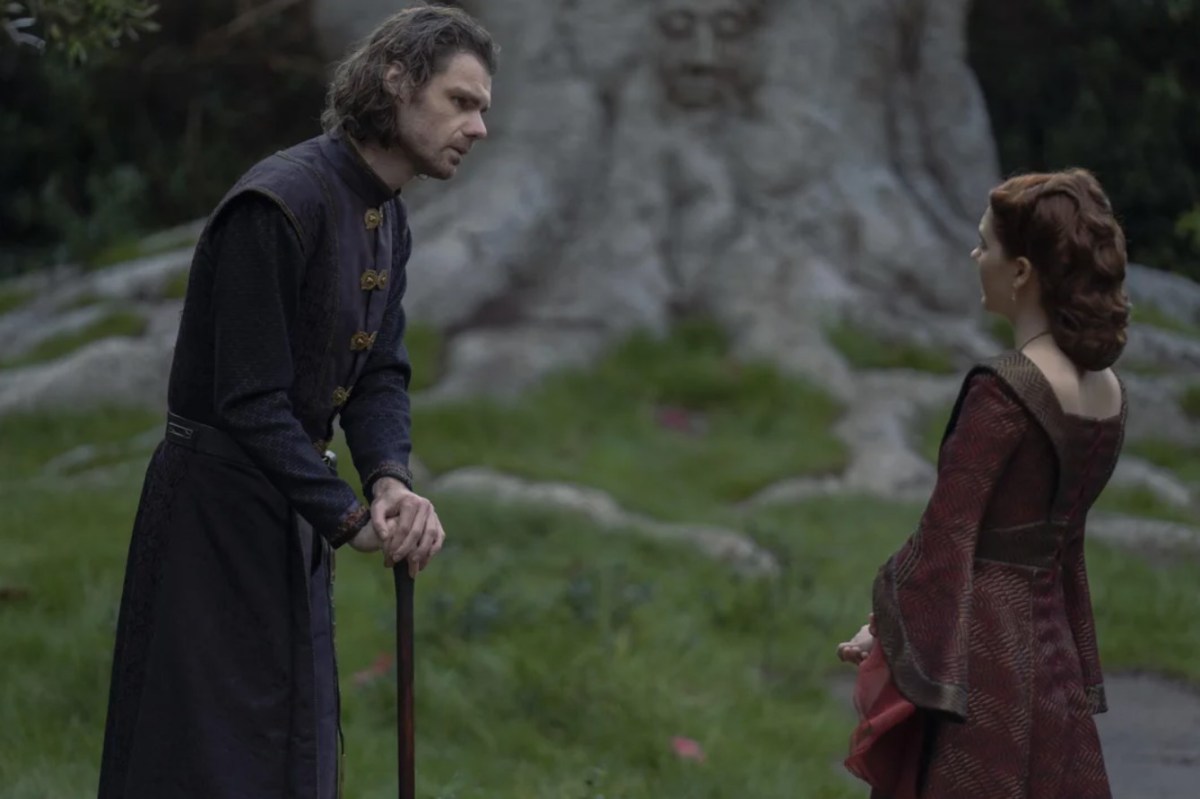
Muppet Tullys
This last bit isn’t really a Game of Thrones easter egg, but it’s too brilliant to leave out— and it proves once more that George R.R. Martin is a nerd just like all of us. During the session of the Small Council in which we see both Rhaenyra and Alicent take place, we hear that House Blackwood and House Bracken are at it again with their feud— and the Queen asks why this matter is being brought in front of the King rather than being dealt with by the liege lord of both Brackens and Blackwoods. That liege lord being the Lord of Riverrun, Glover Tully.
Now, what you might not know is that Grover Tully has a grandson from an unnamed son— and that grandson is named Ser Elmo Tully. Ser Elmo Tully has two sons of his own, Kermit and Oscar Tully. Three entire generations named after Muppets. And don’t think we’ve seen the last of these Muppet Tullys— Elmo in particular will have a major role to play in the upcoming Dance of the Dragons, so hopefully, we’ll get to see him in action in the future seasons of the show.
The Dance of the Dragons inches closer and closer on House of the Dragons, as both Episode 7 and Episode 8 can be considered full “the last moments of quiet before the storm” territory. Like all episodes of House of the Dragon so far, both “Driftmark” and “The Lord of the Tides” have had several references, callbacks and nudges to HotD’s parent show, Game of Thrones— so here are some of them.
Lights On, Anyone?
Out of all the opinions and comments that surfaced on the Internet after Episode 7 aired, the most widespread one was definitely about the show’s lighting. And not in a particularly good way. A good chunk of Episode 7’s pivotal scenes — Rhaenyra and Daemon on the beach, Aemond bonding with Vhagar — happened at night in pretty much total darkness, which made actually seeing what was going on difficult for most viewers.
And we all know what episode in Game of Thrones is guilty of this very same thing— Episode 3 in Season 8, “The Long Night,” where the entire battle against the White Walkers really puts everyone’s eyesight to the test.
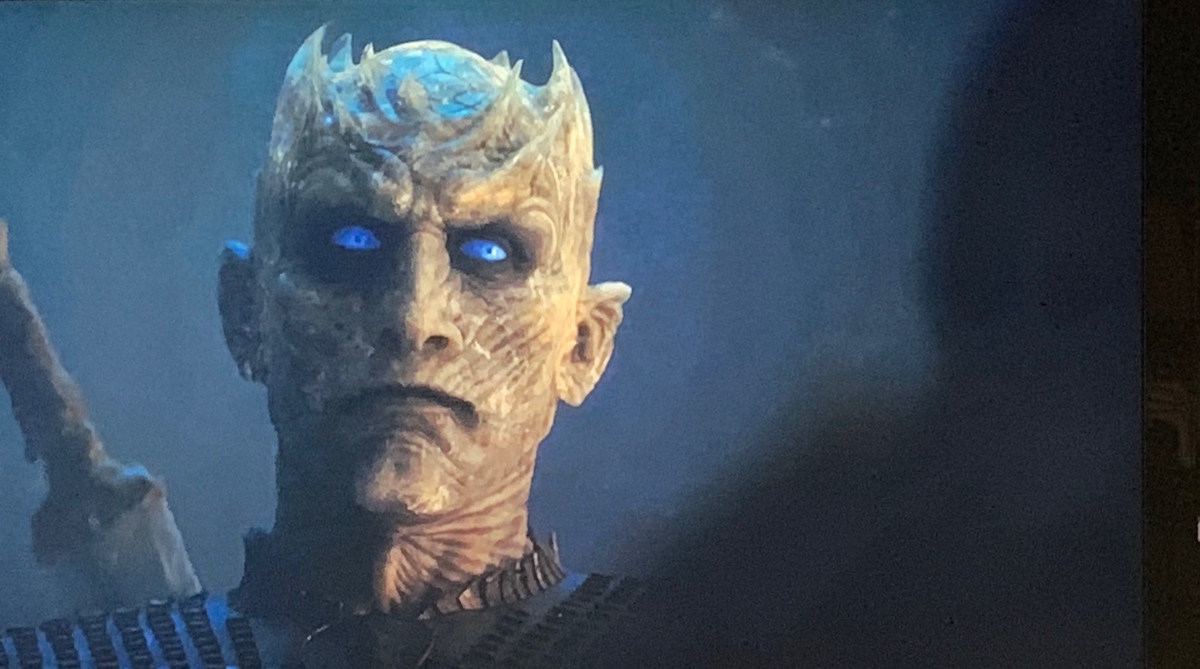
Children’s Squabbles Turn Violent
The fight between Rhaenyra’s and Alicent’s children in Episode 7 starts innocent enough before devolving into an absolute mess— with Aemond choking Jacaerys, prompting Jace’s brother Lucerys to slash at Aemond’s face with his dagger. The consequence of this wound is Aemond losing his eye— and Queen Alicent demanding justice in the most textbook “eye for an eye” fashion.
While both the stakes and the context are different, the entire sequence echoes the one in the first season of Game of Thrones— where Joffrey, Sansa and Arya are brought before the King after their fight during the journey from Winterfell to King’s Landing. Cersei also demands retribution, resulting in Sansa losing her direwolf Lady as a substitute for Arya’s escaped direwolf Nymeria.
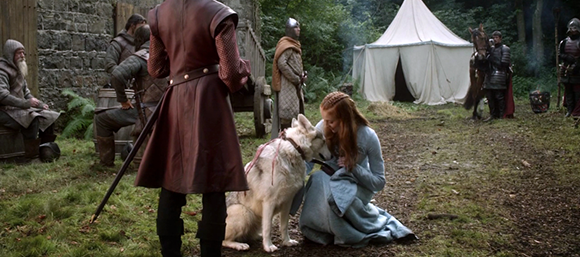
The Valyrian Dagger, Back Again
Once Viserys denies Alicent’s request of getting one of Lucerys’s eyes removed in exchange for Aemond’s, she decides to take matters into her own hands and comes at the boy brandishing the King’s Valyrian dagger. Rhaenyra steps in to defend her son and the two former friends have a scorching confrontation born out of their decade of resentment and jealousy and rivalry— at the end of which Alicent slashes Rhaenyra’s arm, a wound that will leave behind a massive and noticeable scar.
The importance of this Valyrian dagger has been stated again and again throughout House of the Dragon, and with good reason— it’s the symbol of Aegon the Conqueror’s dream of the Long Night, as well as the same one Arya will use to kill the Night King.

Sudden Piousness
In Episode 8, when Rhaenyra and Daemon finally return to King’s Landing after spending the last five years or so away from the realm’s capital, they find the place they both grew up in much changed— with the Red Keep’s dragon insignia and effigies removed to make place for seven-pointed stars and statues honouring the Faith. The same symbol can be found around Queen Alicent’s neck, and the Queen’s new-found piousness comes back also in her prayer before the family sits down for dinner.
While the Hightowers have always had strong ties to the Faith of the Seven — with Oldtown currently housing the largest sept in the Kingdoms — it was never displayed as prominently as it was in Episode 8. This is obviously a political move— removing ties to House Targaryen and strengthening the ones to House Hightower in preparation for Viserys’s death. At the same time, it can’t help but bring to mind Cersei’s spectacular miscalculation in Season 5— where she helped raise the Faith of the Seven’s influence in King’s Landing before this decision dramatically backfires on her.
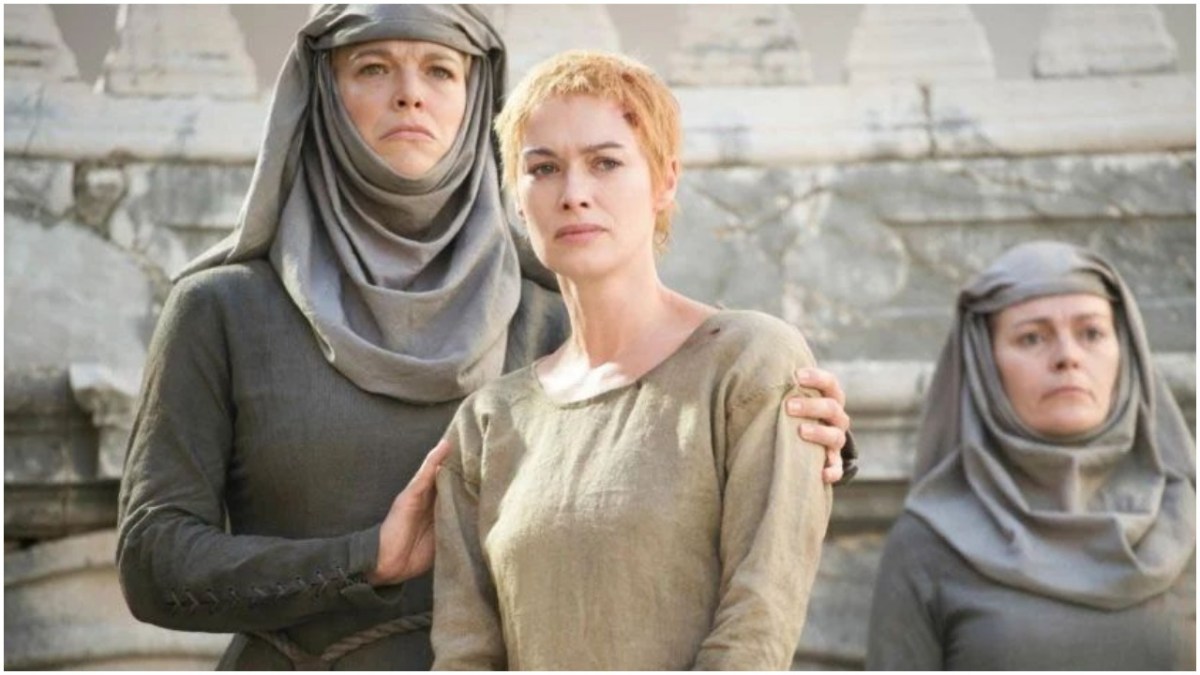
“You are no son of mine”
Episode 8 also further solidifies Prince Aegon as an enjoyer of all the worst personality traits of spoiled princes— including assaulting handmaids. Once Queen Alicent hears what he has done to one of the Red Keep serving girls, Dyana, she marches straight to her son’s chambers and unleashes her fury on him— calling him “no son of hers”.
The same sentence was used verbatim by Tywin Lannister towards Tyrion in the finale of Game of Thrones‘s Season 4— when Tyrion had already shot him once and was reloading his crossbow to deal him the final blow.
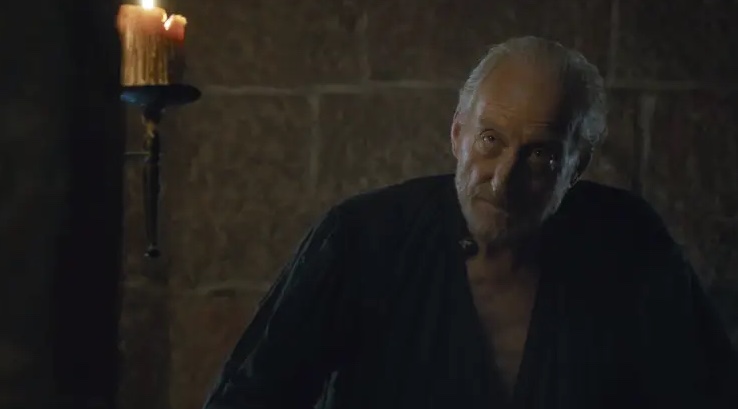
Aegon That Was Promised
The ending of Episode 8 established something that Fire & Blood had never even hinted at— the last building block in the Dance of the Dragons being a massive misunderstanding between Queen Alicent and her dying husband. In his final moments, Viserys answers the questions that Rhaenyra had asked him some scenes before— whether or not he still believed in Aegon the Conqueror’s dream. Viserys’s reply confirms that he does and that there will be an Aegon who is the Prince That Was Promised— Alicent, who’s the only one who hears him, assumes he’s talking about their son, while Viserys was probably referring to Rhaenyra’s own son Aegon.
Now, we can have all the discussions in the world about whether or not Alicent’s misunderstanding is genuine or not, but considering how Game of Thrones ended it wouldn’t be too much of a stretch to believe that while Viserys isn’t talking about Alicent’s Aegon he isn’t talking about Rhaenyra’s Aegon either— but rather of the Aegon Targaryen who did actually fight in the Long Night and was hailed as the Prince That Was Promised, aka Jon Snow himself. This is, of course, valid if we consider show canon and show canon only— there’s another Aegon Targaryen in the books, for starters, and George R.R. Martin has spoken multiple times about his ending being different from the one in Season 8 of GoT.
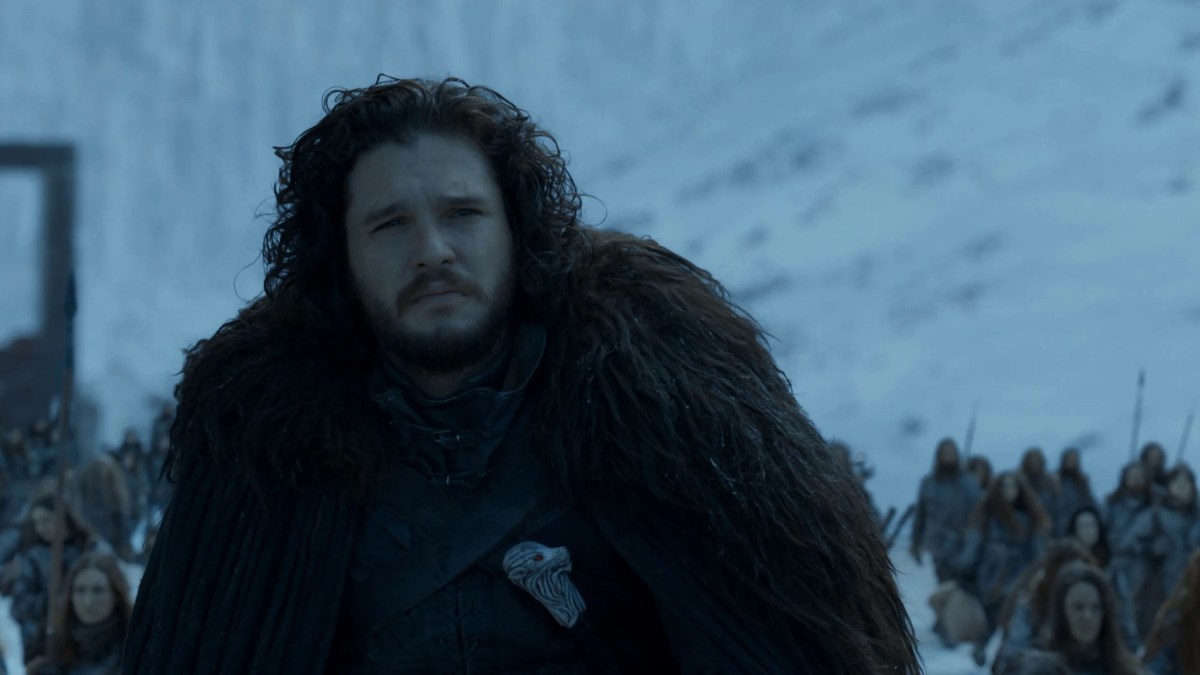
The second to last episode of House of the Dragon just premiered, bringing us one step closer to the true start of the Dance of the Dragons— even though one could argue that what went down in “The Green Council,” from Alicent and Otto plotting to put Aegon on the Iron Throne to Princess Rhaenys’s bursting through the Dragonpit’s floor right in the middle of a coronation pretty much set things in motion already.
Like all other episodes this season, “The Green Council” has some easter eggs calling back to Game of Thrones to remind us where we came from and where will all that we’re seeing happening in House of the Dragon will lead to. So here are some of them.
Candle in the window
Towards the start of the episode, we see Alicent’s handmaiden Talya — alone in the Queen’s rooms now that Alicent is in session with the Small Council — light a series of candles placed right in front of a window. The wider shot on the entire Red Keep shows us that those candles are well visible from the outside— and since we know that Talya is one of Mysaria’s spies we can make the educated guess that those candles were meant to warn the White Worm that the King had died.
Candles placed in windows being used as a way to send a wordless message aren’t anything new in Game of Thrones— Sansa does the same when she’s at Winterfell in Season 5, trying to contact Brienne.
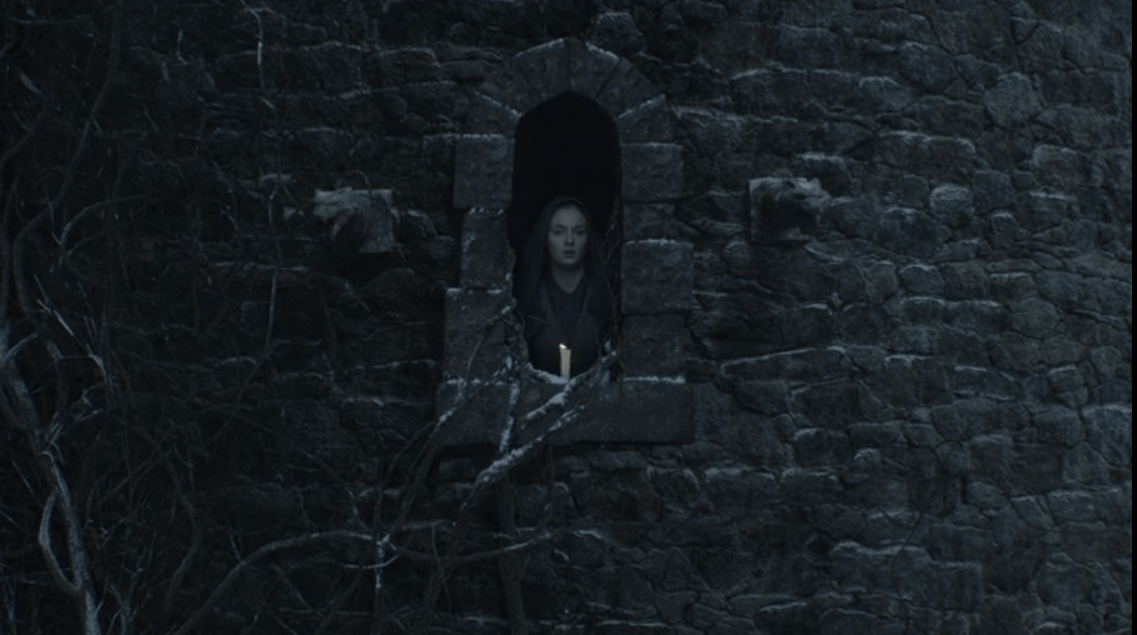
Ring the bells
I think everyone remembers Tyrion Lannister going around the final episodes of Season 8 repeating to everything and everyone to listen for the bells, a sign that King’s Landing was going to surrender to Daenerys and her army. Too bad that in Season 2, before the Battle of the Blackwater, Lord Varys tells Tyrion himself that he’s “always hated the bells. They ring for horror. A dead king, a city under siege”. Maybe Tyrion just forgot.
In “The Green Council,” however, the King’s Landing bells sound exactly for one of the reasons Lord Varys was mentioning— the death of a King and the ascension of the new ruler of the Realm.
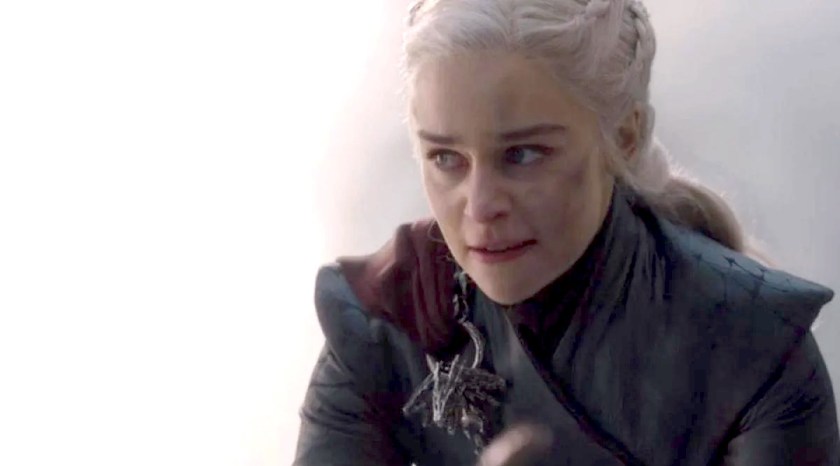
“Bend the knee”
Another massive Season 8 — and Season 7, to be fair — refrain, back with a vengeance. Towards the end of Game of Thrones, Daenerys asks this of Jon and of the other lords and ladies of the Realm as the rightful heir to the Iron Throne.
In “The Green Council,” however, it’s Alicent and Otto who discuss Rhaenyra having to bend the knee to Aegon and give up her birthright— something that she would probably never do, just like her descendant in Game of Thrones.
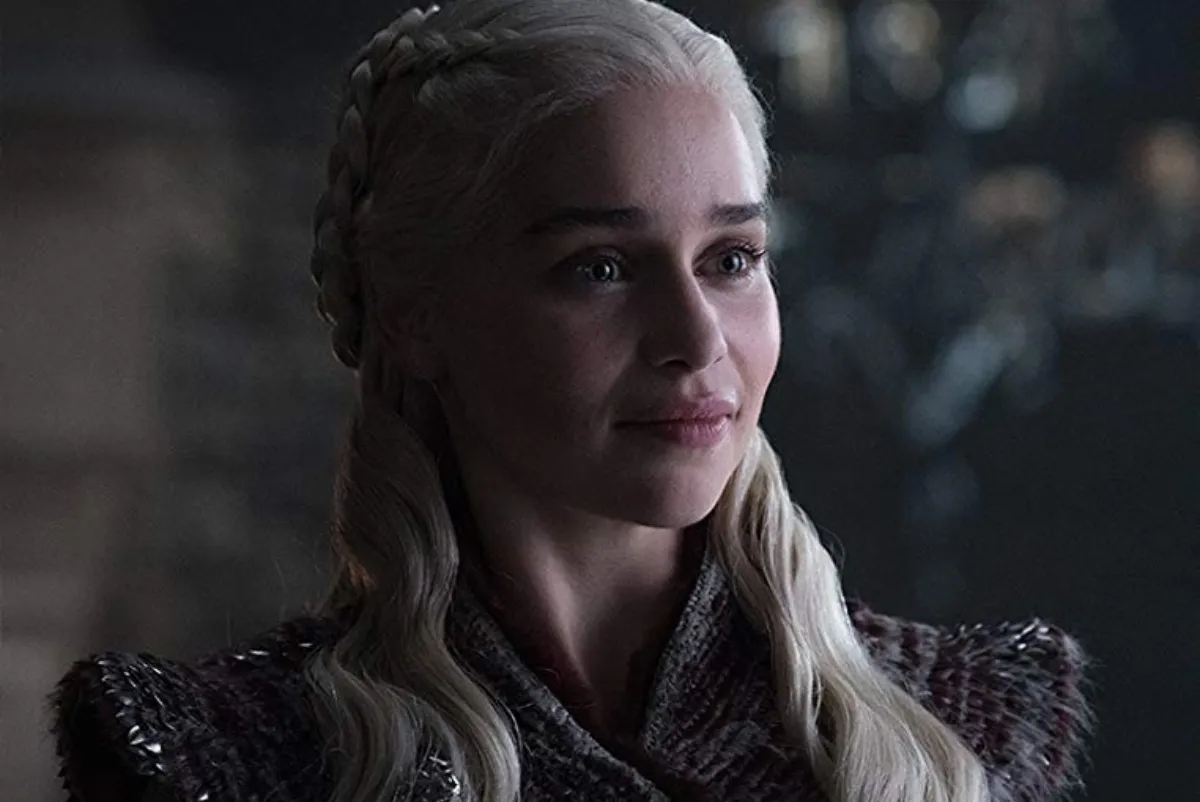
Spiders in the Red Keep
During the Scene-That-Shall-Not-Be-Named, Larys Strong tells the Queen that there are spiders in the Red Keep—a web of spies and informants that report to Mysaria, aka the White Worm. One of these informants is Alicent’s own handmaiden Talya, meaning that Mysaria was able to burrow herself pretty deep within the rooms of the most important people in the Realm.
All of this use of “spiders” to refer to spies can’t help but bring to mind the Spider himself, Lord Varys, who served as Master of Whispers at the end of the Targaryen dynasty and the beginning of the Baratheon one—even though he called himself Spider, while his informants were known as little birds.
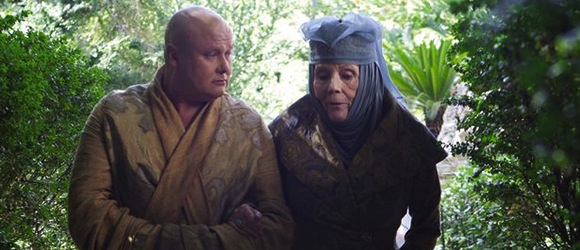
So we’ve finally reached the end of the first season of House of the Dragon—and what an ending it was. Now, all we have to do is brace for the open war and all the horrible things that entail, all waiting for us once 2024 and Season 2 roll around.
Like the other nine episodes of this season, “The Black Queen” also contained some fun easter eggs and callbacks to Game of Thrones, the first time we’ve seen the world created by George R.R. Martin come to life on screen. So here are a few of them.
Dragon babies
In the past few episodes, we’ve seen Rhaenyra pregnant with her third child with Daemon after their two boys, Aegon (the Younger, because everybody is named Aegon in this family) and Viserys. And in Episode 10, the shock from the news that Rhaenys brought from King’s Landing — what with her father dying and her half-brother getting crowned in what is essentially a coup — causes Rhaenyra to go into premature labour.
At the end of yet another horrific birth scene, Rhaenyra gives birth to a stillborn baby daughter—whom the books describe as having dragon-like features. The same thing happened to Daenerys Targaryen when she gave birth prematurely to her son with Khal Drogo, Rhaego, as we see towards the end of the first season of Game of Thrones.
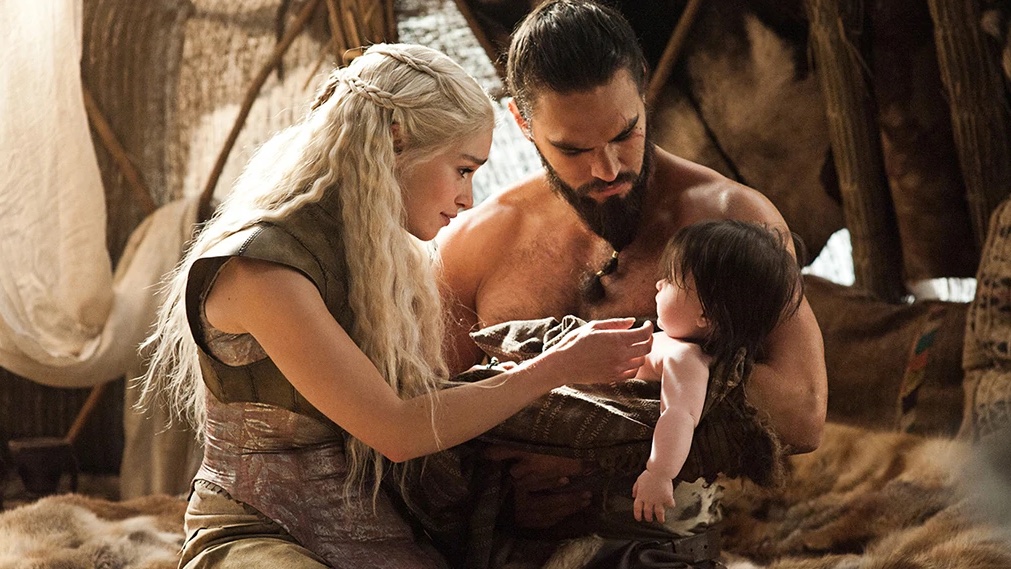
The Painted Table
Many of the decisions in Episode 10 are taken around the Painted Table, the map of Westeros that Aegon had made before he and his sisters started out their Conquest in earnest and one of the most famous features in the entire castle of Dragonstone.
We’ve seen the Table pop up again and again throughout Game of Thrones, what with Dragonstone being Stannis Baratheon’s seat first and Daenerys’s first outpost in the Seven Kingdom towards the end of the show. But truth be told, we’ve never seen it look so otherworldly as it did on House of the Dragon, with candles lighting it from underneath to make it look like everything is bathed in fire.
The Eyrie and Winterfell
Before things absolutely precipitate into chaos and bloodshed, we see the newly-crowned Queen Rhaenyra trying to smooth things out with envoys and messengers—gathering her supporters and seeing whether or not she has a good fighting chance against Aegon and the greens. So she dispatches her two eldest sons, Jacaerys and Lucerys, to opposite corners of the realm to remind the Great House of the vow they took to uphold Rhaenyra’s rights as the Princess of Dragonstone.
While Lucerys’s flight takes a tragic turn, we have yet to see Jacaerys’s journey—but we do know where it will bring him, and both are locations that we’ve had chance upon chance to get familiar with and love in Game of Thrones. It’s time to go back to the Vale of Arryn, but most importantly, winter is coming and we’re returning to Winterfell.
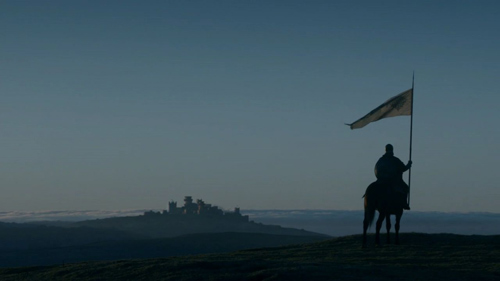
No man so accursed
All throughout the A Song of Ice and Fire books, as well as Game of Thrones, we’re reminded that “no man is so accursed as the kinslayer.” No matter what religion you’re looking at—all the gods in Westeros, from the Seven to the Old Gods to the Drowned God of the Iron Islands, are said to hate the sin of killing one’s own family member more than anything else.
And yet we’ve seen our fair share of kinslayers in the eight seasons of Game of Thrones—what with Tyrion killing his father Tywin and Euron throwing his brother Balon down into the sea. Just like we’ve witnessed our very first act of kinslaying in House of the Dragon, with Aemond killing his nephew Lucerys.

(via: ScreenRant, Decider, ScreenRant, ScreenRant; images: HBO)



